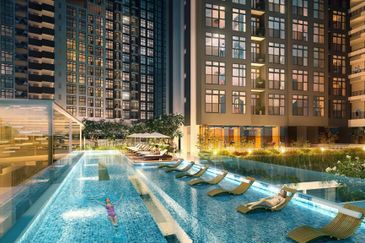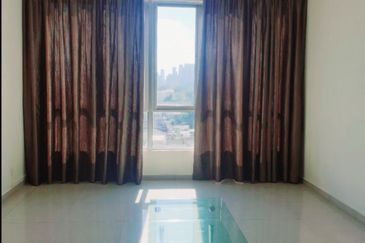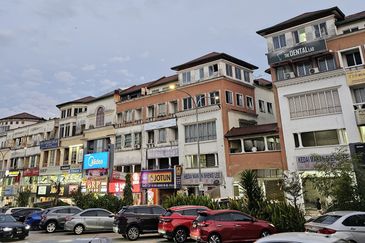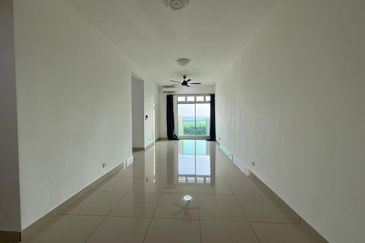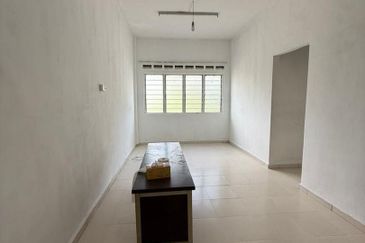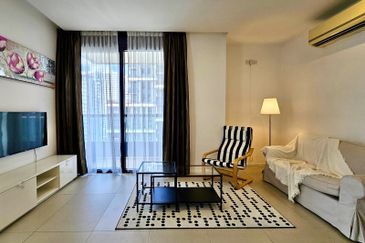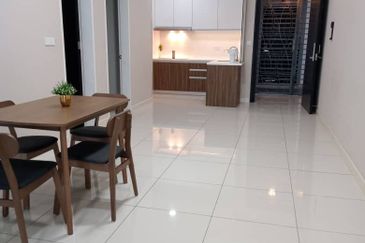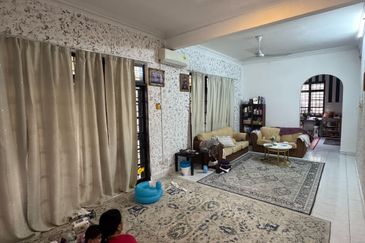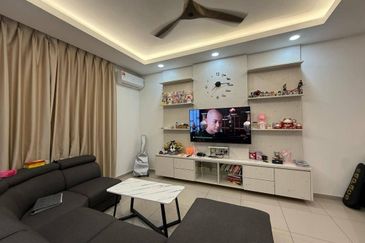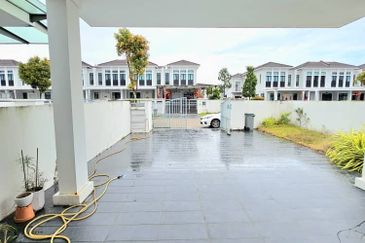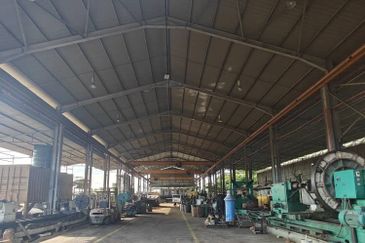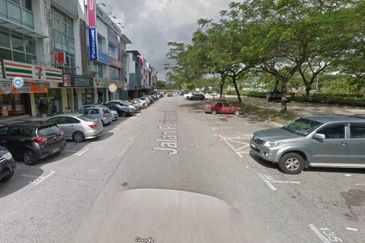
MALAYSIA has many malls, especially in the Klang Valley — from mega and strata-titled shopping centres to neighbourhood malls. The retail sector has evolved over the years and as more supply comes onstream, concerns of a glut grow.
New completions last year included Atria Shopping Gallery in Damansara Jaya, Sunway Putra Mall in Kuala Lumpur, Ikea Cheras, Emerald Avenue in Selayang and Star Avenue Lifestyle Mall in Shah Alam. In total, they amount to more than two million sq ft of new retail space.
Several malls are scheduled for completion this year, such as Sunway Velocity in Cheras. Others include Empire City Mall in Damansara Perdana, with a net lettable area (NLA) of around 2.5 million sq ft, and MyTown Shopping Centre in Cheras with an NLA of about 1.1 million sq ft.
According to Savills Malaysia Sdn Bhd managing director Allan Soo, total retail space in Greater Kuala Lumpur will reach 70 million sq ft by end-2018 — exceeding the supply in Singapore and most cities in Southeast Asia.
“Ideally, we believe retail space per capita should be below five sq ft,” he says. “Currently, we already have in excess of 7.5 sq ft per capita of population in the Klang Valley, as the total population is now 7.3 million people.”
JLL Property Services (M) Sdn Bhd country head Y Y Lau, meanwhile, believes there are no hard and fast rules when it comes to the retail space per capita figure. This is because there are external factors — such as the local level of affluence and consumer behaviour (different income groups) — environmental factors (temperate versus tropical climate) and density, that should be taken into account.
“If the area is large, people may drive a longer distance to malls and shopping areas. In the case of the US, the retail space per capita is among the highest in the world. In Asia, we have more higher-density living and so our retail space per capita could be lower.
“Another factor is the weather. In Malaysia and Singapore, we get either a wet or dry season. This is unlike Australia, the UK and the US, where seasonal changes encourage more retail consumption. Our retail space per capita is likewise lower for that reason,” says Lau.



Neighbourhood malls
With limited space available in the city centre, most retail space has been built in suburban areas and is generally known as neighbourhood malls.
According to Jones Lang Wootton (JLW) executive director Malathi Thevendren, the total supply of retail space in the Klang Valley was 64.4 million sq ft as at end-2015, with 74% located in suburban areas.
Between 1995 and 2015, retail space supply saw a compound annual growth rate (CAGR) of 10% — outpacing the population growth in Selangor, which saw a CAGR of about 4% over the same period, says Malathi.
She adds that the situation has resulted in the dilution of the catchment area and increased competition between retail centres, as evidenced by the decline in the average occupancy rate from 96% in 1995 to 83% at end-2015.
“In the past, prime retail centres typically first open to the public with a physical occupancy rate of 70% to 80%. But in recent times, retail centres have been opening with a lower physical occupancy rate of 60% to 70% and the malls are also taking a longer gestation period before recording ‘full occupancy’ of 95% or more,” says Malathi.
Meanwhile, Lau says future supply is limited in the city centre while suburban areas are expected to see an estimated 15 million sq ft of new retail space in the next three years.
Total supply in suburban areas could reach 36.4 million sq ft by end-2018, almost double the current supply, she adds.
“Sales have been slow in the past year as the retail market has yet to recover from the impact of the Goods and Services Tax (GST). Coupled with the large amount of supply coming into the retail scene, competition in the market is expected to be very stiff,” says Lau.
The proximity of a neighbourhood mall to shoppers’ homes could be the winning factor, and tenant mix will continue to play a major role in the success and survival of these retail space.
Soo sees neighbourhood malls as the preferred choice, especially for regular shopping for groceries and household goods, food and family activities as regional malls are inconvenient to access during the weekends.
“Neighbourhood malls with niche positioning have performed well, especially those in affluent suburbs,” he says.
Lau agrees, citing Bangsar Village as an example of a successful neighbourhood mall. She says neighbourhood malls have a different positioning compared with megamalls, as the targeted catchment area is different.
“Footfall at Bangsar Village is not as high as that in the big regional malls such as Mid Valley Megamall, but it still enjoys a high occupancy rate of more than 80% despite facing competition from the nearby Bangsar Shopping Centre.
“Bangsar Village has a variety of food and beverage operators, some mid to high-end fashion brands and a grocery retailer providing convenience to its immediate neighbourhood, which consists of residents from the middle and upper class and expatriates.”
In the face of growing competition, some shopping malls are constantly upgrading their space to remain competitive as well as conducting more marketing activities to promote the malls, says Lau.
“The tenant mix in a shopping mall is one of the key drivers of footfall. As the Klang Valley is becoming more urbanised, it is also important for the shopping malls to maintain their upkeep to remain attractive.”
Increasingly, however, the same brands are seen in almost every shopping mall. Lau says the malls’ management teams should bring in new retailers or brands to refresh their tenant mix and attract shoppers from different locations.
At his talk titled “Industry Trends and Insights — Retail Sector” at the recent Malaysian Annual Real Estate Convention 2016, Tan Joon Kai said he sees great prospects for suburban shopping malls in maturing neighbourhoods in the Klang Valley.
The Fair Star Shopping Sdn Bhd retail consultant added that well-planned suburban malls that are smaller in size and near residential areas will not be affected by the growing supply of retail space as they mainly cater for underserved neighbourhoods.
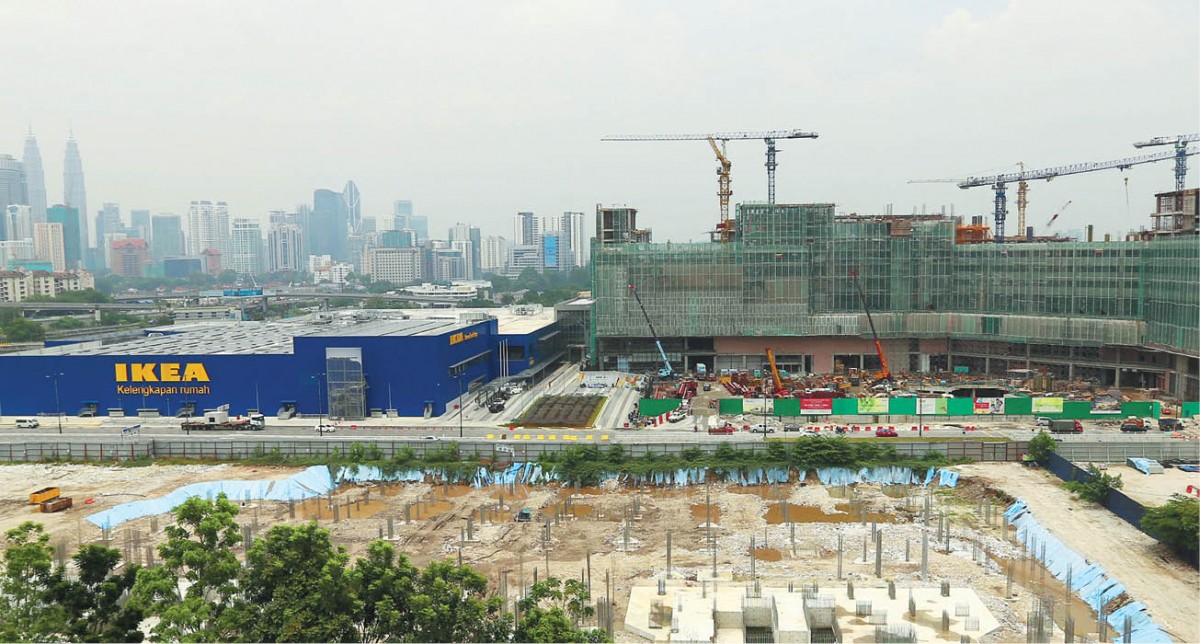
Intense competition between shopping malls also creates a situation where owners look to improve their tenant mix or allocate more budget for renovation to enhance shoppers’ experience and to attract customers.
“For instance, Viva Home Shopping Mall (formerly known as Plaza UE3), Central Market, Sungei Wang Plaza and The Intermark (formerly known as City Square) have a new look and have successfully attracted consumers’ attention,” Tan said.
CH Williams Talhar & Wong, in its Property Market 2016 report, says there is an increased demand for innovation in retail malls in Kuala Lumpur from the young and affluent urban population as well as tourists, and that will be one of the key drivers to maintain the performance of these malls within their locations.
“[With] strategic planning for these shopping districts, coupled with the weakening ringgit and anticipated increase in tourist traffic due to promotional efforts by the government, this sector is expected to remain firm,” it adds.
Evolving role
The retail sector saw a mixed performance last year. According to Lau, most shopping malls performed moderately, while prime shopping malls such as Pavilion Kuala Lumpur and Suria KLCC continued to do well. Rents have been adjusted accordingly since, but Lau expects it to correct by 1% to 2.5%, if not maintained, due to the large amount of incoming supply. She expects the vacancy rate to rise to above 10% over the next five years.
Soo says the broad anecdotal data suggests a drop of 20% in sales turnover in all categories nationwide last year. The implementation of the GST in April 2015 resulted in lower sales — a drop of almost 50% in many big-ticket items.
“By May, sales generally normalised, although luxury brands faced some problems until the third quarter, with some exceptions. Top luxury brands actually saw an increase in year-on-year sales.”
He says Johor Baru and Melaka have benefited from the weaker ringgit as Singaporeans have flocked over. For example, sales of food and beverages have increased by more than 20% in general, and clothing sales in Johor Baru have increased marginally.
“The Savills index for rents has continued to increase as malls are still seeing some traction,” says Soo. “The threshold for rents has already been breached at more than RM150 psf per month. We will not see any more increase in the next review and new malls are starting from a lower base rent.”
Despite all the challenges in the retail market, Soo recognises the sector’s evolving role due to the advancement of technology and conveniences that further promote e-commerce in the country.
Shopping malls are slowly becoming distribution channels as e-commerce activities continue to increase. “Omni-channel retailing is the byword now,” Soo observes. “Online retailing is the most impactful trend and it is a major threat to malls. It is basically supported by a whole new generation of youngsters who do not follow their mums’ taste and habits.”
The current trend seen in this new generation is that they do research on the internet before they make any purchases. Luxury brands, he says, have moved ahead by consolidating their shops to cater for this group of shoppers.

“In the future, we will see hybrid click-and-collect malls, with a lifestyle space and good ambience, as a successful format,” says Soo. “We think the bricks-and-mortar mall will still be required as people need to go out to the physical world of retail. However, it will be combined with the virtual world of retail, namely online retail, where there may be showrooming or click-and-collect service at the mall. There may even be online purchases at the shops themselves after trying out the apparel.”
According to a Knight Frank Malaysia Property report entitled “Real Estate Highlights 2H2015”, more consumers have become well-informed shoppers through technology and they are opting for alternative shopping methods for affordable and cheaper options.
“This has led many retailers to offer online and apps shopping as alternative platforms for business growth,” it explains. “The rise of online retail shopping among the younger and tech-savvy population is driving the courier delivery industry and this augurs well for the logistics sector as demand for warehouse space grows.”
Outlook and opportunity
Property consultants expect the environment in the retail sector to remain challenging due to major headwinds globally and locally. With the weakened currency and increased prices of goods, Lau expects businesses to either increase their prices or shave their profit margins to ensure their products remain affordable.
“Private consumption is low as low consumer sentiment has led to lower private consumption,” she says. “Shopping will remain as one of the favourite activities of Malaysians but the growth of the retail market is also dependent on economic growth. Currently, Malaysia’s GDP growth is forecast to slow in the next few years. Hence, the retail industry is expected to follow suit.”
The outlook of the country’s retail market is not optimistic, as indicated by the Malaysian Institute of Economic Research’s consumer sentiment index, which has been declining since 3Q2014. The index hit a new low of 63.8 points in 4Q2015 compared with 70.2 points in the previous quarter.
Independent retail research firm Retail Group Malaysia cut its forecast for 2015 retail sales for the fifth time due to poor retail figures achieved in the second and third quarters of the year.
It anticipates retail sales growth of 2% this year, down from an earlier estimate of 3.1%. The slowest growth seen before 2015 was in 2009 at 0.8%. The challenges faced by the industry in the last few months due to the weak ringgit have contributed to the revision of its forecast.
Soo expects to see a decrease in sales this year but he believes it will improve later in the year due to an influx of Chinese tourists. “The market should pick up if the waiver of visa requirement for Chinese tourists is implemented post-March 2016,” he says. “We see the market improving in 2017 and improving gradually beyond that.”
Generally, the short-term outlook for the local retail industry is “one of caution”, Knight Frank Malaysia Property says in its report.
A majority of retailers may adopt a wait-and-see approach to their expansion plans due to the anticipated challenges. However, demand for retail space at prime and established regional and neighbourhood shopping malls with high footfall will remain resilient, it adds.
With larger retail centres being offered, “a handful of regional and local retailers are taking up larger lots at competitive tenancy terms with attractive rents and incentives”, says Knight Frank Malaysia Property. “Many manufacturers-cum-suppliers/consignees have also turned ‘pop-up’ retailers to improve their cash flow.”

Nevertheless, it is not all doom and gloom for the retail sector. Malathi sees opportunities in several locations in the Klang Valley in the immediate future.
JLW’s retail property market research divides the Klang Valley into nine geographical zones and Malathi says the Southern I (Cheras, Kajang and Bangi) and Western II (Shah Alam and Klang) regions show the highest potential development capacity as the supply of retail space per capita is projected to be low at four to five sq ft.
“Apart from that, there is still opportunity in the Eastern (Cheras, Ampang and Hulu Kelang) and Northern (Kepong, Selayang and Rawang) regions,” she adds. “While the retail space per capita in these locations indicates possible future opportunities, it is vital for any future development to be built on a foundation of careful market research.”
This article first appeared in City & Country, a pullout of The Edge Malaysia Weekly, on April 25, 2016. Subscribe here for your personal copy.
TOP PICKS BY EDGEPROP
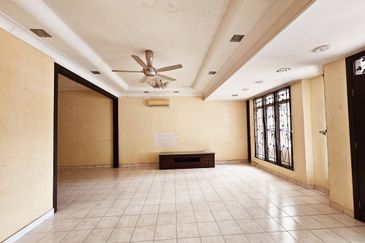
Taman Bukit Rahman Putra
Sungai Buloh, Selangor
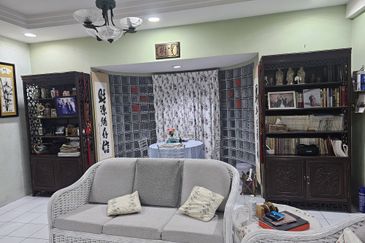
Taman Impian Indah, Sungai Buloh
Sungai Buloh, Selangor
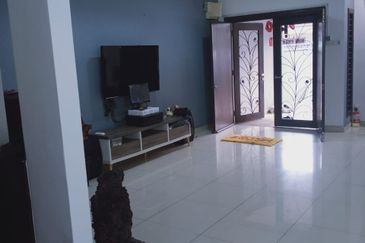
Taman Sri Putra, Sungai Buloh
Sungai Buloh, Selangor
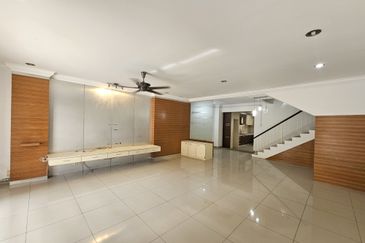
Taman Sri Putra, Sungai Buloh
Sungai Buloh, Selangor



